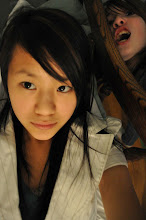Changing Life of People (Cultural/Intellectual)
 |
| Literacy Rates |
Cornelius Jansen: "So, instead of spending my strength quarreling with the hand, I would strike for the heart of that great tyranny. "
1585
Cornelius Jansen, father of Jansenism born
Jansen emphasized “original sin” in contrast to the ideas of Jesuits, along with predestination. Jansenism was popular among the Catholic French, especially those of the urban elite.
Increase in literacy rates of males
In England: From 20% to 50%
In Scotland: 90%
In Scotland: 90%
Philip Spener, Father of Pietism born
Spener was born in 1635, and ended up being one of the biggest contributor to the movement of Pietism that started within Lutheranism.
 |
| Witch Trials |
France prohibits witch trials
The last witch was executed in the same year. Other European countries followed in the late eighteenth century as the social elite grew less fearful of the Devil and indifferent towards identifying witches.
Jean-Baptiste de la Salle's Brothers Christian schools founded
By 1780s, the schools were bustling with success—the attendance was around 35,000 students across France.
Prussia makes elementary education mandatory
The goal of this was to aid the reading of Lutheran scriptures and creating a better educated population to serve the state.
 |
| Forceps |
Invention of forceps
Forceps were handheld instruments used for grasping objects; as a result, surgeons from all over Europe started to seek lucrative new business. They often preached about the disqualifications of midwives and the superiority of their practices.
"The Manual on the Art of Childbirth" by Coudray
Madame Coudray was a French midwife who scripted this widely known textbook. She trained village midwives to use better techniques and obtained royal funds for her campaign. She utilized life size models in her training sessions to teach those who didn’t know how to read.
"Emile" by Rosseau
Rosseau sought to inspire mothers to learn better methods of parenting. According to him, it was exercise, fresh air, and natural dress.
.jpg) |
| Maria Theresa |
Compulsory education by Maria Theresa
Children ages 6-12 were required to go to school five days a week for five hours under Maria Theresa’s rule. This contributed to the increasing flow of education in Europe, and the emphasis on elementary education in the life of a child.
"Common Sense" by Paine
In an informative pamphlet published at the beginning of the American Revolution, Paine presented the American people with an argument— to break free from oppressive British rule. To make his case to the people, Paine used common vernacular and biblical references in this groundbreaking literature.
 |
| First smallpox vaccination |
First vaccination
The first vaccination was by Edward Jenner (1749-1823), and performed on a farm boy against smallpox. Since then, Jenner published his discoveries in 1798 and this new way of treatment spread all over Europe as smallpox declined.








0 comments: